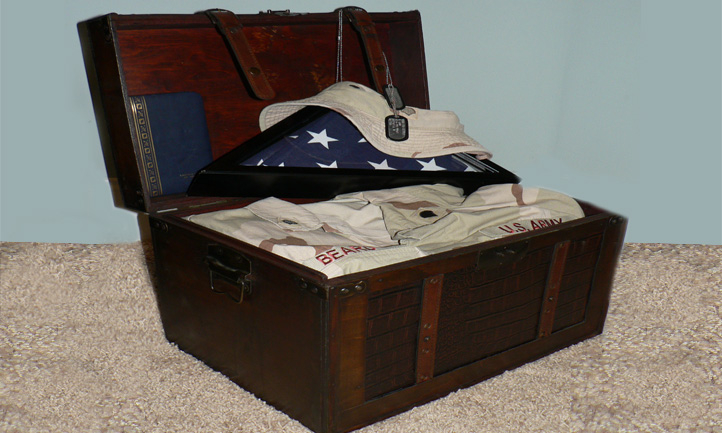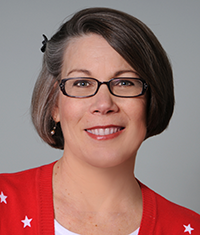Boxes in the Attic: Part Two
Author: Betsy Beard
You Can’t Take It With You
It is said that one of the tasks of grieving is to relocate the loved one from being a physical presence to that of residing in our hearts and memories. It is not an easy task. And we really don’t want to do it. We just want them to come home and walk in the door. And after a few years, we get it. They’re not coming home. They won’t be watching this movie, reading that book, or wearing those clothes, but some of us still hold onto their belongings as connections to the past we shared.

At some point, if we were the recipients of our loved one’s personal effects, we have to address all the material objects, household goods, clothes, and favorite items. As much as we might want to preserve all our loved one’s important possessions, we can’t take them with us when we die—any more than they could. In the meantime, families, friends, and society at large seem to believe we are keeping too much and taking too long, regardless of the quantity of belongings or the time elapsed.
How long should it take before we are ready to part with some of their possessions? Who should decide when it is long enough? How much is enough? How much is too much? When will we know that it might be time to rearrange?
Our own hearts will know when we are able to adjust to the absence of both our loved ones and their belongings.
Sorting through personal effects and household goods can be a trauma all its own, regardless of when we do it. Handling the things our special person collected or wore or loved just plain hurts. Memories sweep in and threaten to overwhelm us. Fresh grief wells up within our hearts. It is a daunting task and one that can be saved until we are ready to do it or until space considerations and emotional changes dictate that the task must be completed.
Fortunately the task can be accomplished in small stages. We can decide to sort through one drawer or one box. We can decide to spend 15 minutes, an hour, or a day. The timing and the amount of sorting are up to us. We can choose to invite someone to help, or we can do it alone.
When our family passed the third anniversary of Brad’s death, we were preparing to move to a smaller home. It seemed like a good time to go through the boxes and trunks that the Army had sent us, both from Iraq and from Korea where Brad was posted before deploying to Iraq. Even after three years, it was excruciatingly painful to touch and handle the things that Brad cared so much about and valued so highly.
At the time we thought we knew the drill—Brad is not coming home—but it still hurt to give away his precious things, much less throw anything away. Nevertheless, we sorted and sifted in preparation for moving. We made many of Brad’s clothes available to extended family who could wear them or who wanted something as a keepsake. Almost everything else went to a room in the new house that came to be called Brad’s room, simply because it was filled with his things: his clothes, his bedspread, his shoes, his books, his CDs, DVDs, important papers, medals, and Army uniforms.
Some things went into “his” dresser and “his” closet. A lot of things were boxed and stored under the bed, on the closet shelves, and in the attic. At the three year mark, nothing much was discarded. We kept all the books to read, the movies to watch, the CDs to listen to, and the computer to use.
Over the next five years, the computer and other electronic devices wore out and were tearfully disposed of. Some clothes were worn and a few books were read, but everything else languished on shelves, unnoticed, unused, and collecting dust.
Finally, we decided that it was time once again to tackle the job of making the hard decisions. We were older, we were further along the path of healing, and we were finding that we did not need to save everything in order to function. We didn’t need everything to assure us that Brad was and always would be an important person in our lives. It was time for a spring cleaning, and after eight years we thought we knew the drill—Brad really wasn’t coming home—but it was still hard to handle his things and make the necessary choices. Divesting ourselves of more of his belongings was still painful, but with each item we would ask ourselves, “Do we need this item?” Is this item helping us maintain our equilibrium in the world? Will we be distraught without it? Is it essential for maintaining our connection to Brad?
It still hurt to touch and smell the things that had been stored away or displayed on shelves and walls. But this time we were able to condense, consolidate, give to Goodwill, or discard. It took several weeks, because we could not work more than an hour or two at a time. It was emotionally draining and physically exhausting, but we found that it became less painful as we progressed through the boxes and stacks. With each passing decision, we were breathing a little easier.
This time, we worked through the remaining clothes and uniforms. We didn’t really want or need his general issue socks and undershirts, nor his frayed jeans, team sports gear, or size 14 shoes. We unframed quite a few photos and all his medals and certificates. Those fit easily in a single scrapbook that we can page through when we feel the need. We kept only a few books that we truly might read. We spackled the nail holes and painted the room and got a new bedspread. His old one was never our favorite anyway. Now the whole room felt somehow lighter and brighter.
We also sorted all the things from the immediate aftermath of Brad’s death: multiple newspaper accounts, sympathy cards, receipts. In all there were more than 1,000 cards and we only kept the ones that had a personal story about Brad. The file box of military papers was next. Some photos and papers were scanned and stored on a disk. We kept a few items for the scrapbook and laid the rest on a bonfire. We cried as his dreams and aspirations were sent heavenward in the smoke.
All of these actions mean that Brad is less visible in our living space. But we find that we don’t need the constant physical reminder of who he was. We are no longer afraid that we might forget him. We can condense Brad’s things because his things are not the only part of him that remains.
We are traveling lighter these days. We still have our photos and our written memories. They still cause simultaneous joy and pain. We have kept a few items, but we know that Brad doesn’t reside in his things. He lives in our hearts, right where he has always been. The boxes and the belongings were only a reflection of who he was and how he spent his time, symbols of what was important to him at the time he died. But the legacy isn’t the stuff he left behind. It’s the laughter, the lessons learned, the lift of the spirit, and the stories we tell.

 By Betsy Beard, Surviving mom of U.S. Army SPC Bradley S. Beard: Betsy Beard served as the editor of TAPS Magazine for seven years in addition to volunteering as a peer mentor, care group facilitator, and national workshop presenter. In that time she authored a number of TAPS publications and Quick Series Guides, as well as the award-winning children's book, Klinger: A Story of Honor and Hope and many articles for TAPS Magazine. Betsy has been published in Living with Loss publications and various newspapers. She currently is a freelance book editor and serves as the awards director of Military Writers Society of America. She lives in North Carolina with her husband, Randy.
By Betsy Beard, Surviving mom of U.S. Army SPC Bradley S. Beard: Betsy Beard served as the editor of TAPS Magazine for seven years in addition to volunteering as a peer mentor, care group facilitator, and national workshop presenter. In that time she authored a number of TAPS publications and Quick Series Guides, as well as the award-winning children's book, Klinger: A Story of Honor and Hope and many articles for TAPS Magazine. Betsy has been published in Living with Loss publications and various newspapers. She currently is a freelance book editor and serves as the awards director of Military Writers Society of America. She lives in North Carolina with her husband, Randy.